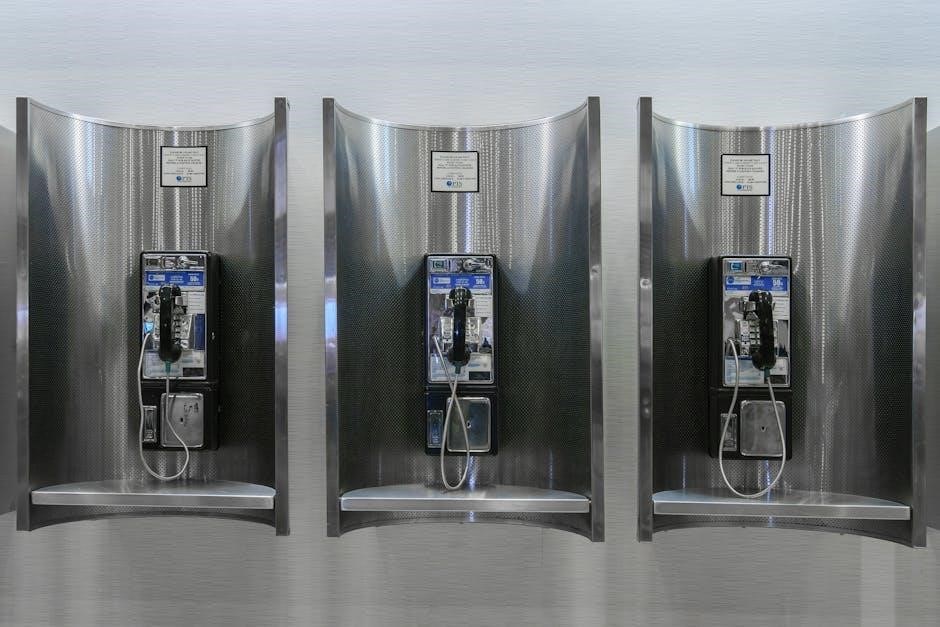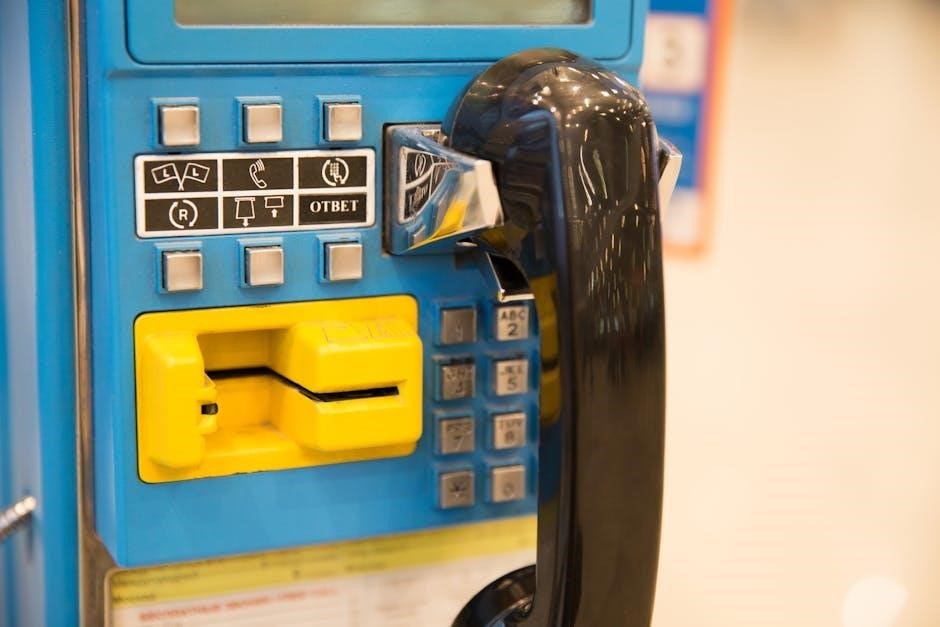What is a Manual Call Point?
A manual call point (MCP), sometimes referred to as a fire alarm box, is an electromechanical device that forms part of a fire detection system. Its primary purpose is to allow individuals to manually activate the fire alarm in an emergency.
Definition and Purpose
A manual call point (MCP) is an essential component of a fire safety system, serving as a manually activated device designed to swiftly initiate a fire alarm. Often referred to as an MCP, it functions as a switch within a building, requiring human intervention to trigger the fire alarm system. In contrast to automatic fire alarm systems that rely on heat and smoke detectors, manual call points provide a direct means for individuals to alert others to a fire, this is usually done by pressing a button or breaking a glass cover. These devices are strategically placed to ensure immediate access during emergencies, enabling a rapid response to potential fire hazards.
Functionality and Activation Methods
Manual call points are designed for straightforward operation, enabling anyone to easily trigger the fire alarm system. Activation typically involves a simple button press or breaking a glass element to expose a button or lever. Once activated, the call point transmits an alarm signal to the fire alarm control panel, initiating the evacuation alarm. Some models also incorporate a non-frangible element, producing an audible “clack” sound upon activation. This manual activation method ensures that individuals can quickly and reliably alert others to a fire, supplementing automatic detection systems and enhancing overall fire safety.

Components and Operation
Manual call points operate by a button press or break glass mechanism. Breaking the glass reveals a button or lever that, when activated, sends an alarm signal to the fire alarm control panel.
Button Press or Break Glass Mechanism
Manual call points are activated through two primary mechanisms: a button press or a break glass design. The break glass type features a glass cover that must be broken to access the activation button or lever. This design prevents accidental activation. Once the glass is broken, the button is exposed, and pressing it initiates the alarm signal. The button press type involves pressing a button to activate the alarm. Both mechanisms are designed for simple and intuitive operation, enabling individuals to quickly trigger the alarm in case of a fire or emergency situation, providing quick alerting capabilities.
Indicator on Monitoring Unit
Upon activation of a manual call point, a signal is sent to the fire alarm monitoring unit, also referred to as the fire alarm control panel. The monitoring unit is equipped with an indicator that visually identifies the specific call point that has been triggered. This visual indication is crucial for pinpointing the location of the emergency. Firefighters and other emergency personnel can quickly locate the source of the alarm, allowing for a faster and more effective response. Some systems may also include audible alerts, providing additional means of locating the activated call point within the building.

Types and Colors
Manual call points are categorized by function and indicated by specific colors. Red call points are for fire alarms, while green are for door release. Other colors may indicate different functions within a building’s safety system.
Red Call Points (Fire Alarm)
Red manual call points are the most commonly recognized type, specifically designed for initiating a fire alarm. When activated, they immediately signal the fire alarm system, alerting occupants to evacuate the building. The activation may also notify the fire services, triggering sprinkler systems, or activating smoke control measures. Their placement is strategic, ensuring they are easily accessible throughout the building. Red call points align with other fire safety equipment and signage, making them easily identifiable in the event of a fire emergency, allowing for swift action.
Green Call Points (Door Release)
Green manual call points serve a different purpose, primarily for door release mechanisms. Typically located near exits, these call points allow individuals to manually release a door during an evacuation. This is particularly useful in situations where electronic access control systems might fail or hinder egress. Activating a green call point overrides the locking mechanism, enabling a safe and swift exit from the building. Their function is crucial for ensuring unobstructed escape routes during emergencies, complementing the fire alarm system by facilitating efficient evacuation procedures.
Other Colors and Functions
While red and green are the most common colors for manual call points, other colors exist to signify different functions within a building’s safety systems. White call points, for example, can be used for emergency warning systems or access control, each color indicates the specific function of the device; The use of varying colors allows for clear differentiation and prevents confusion during an emergency. These specialized call points are designed to initiate specific actions or alerts, contributing to a comprehensive and well-coordinated safety protocol within the facility.

Placement and Location
Manual call points are strategically placed throughout buildings to ensure quick access during emergencies. They are often located along exit routes and in areas with high pedestrian traffic, maximizing their usability.
Strategic Placement in Buildings
Strategic placement of manual call points is crucial for effective fire safety. These devices are intentionally located in areas where they can be easily accessed and utilized during an emergency. Common locations include exit routes, hallways, stairwells, and near doorways. The goal is to ensure that anyone who discovers a fire can quickly activate the alarm, regardless of their location within the building. Proper placement considers factors like visibility, accessibility for individuals with disabilities, and proximity to potential fire hazards. The control panel can also be configured to activate devices depending on the location.
Accessibility and Height
Accessibility is a key consideration when installing manual call points. Regulations often dictate specific height requirements to ensure usability for everyone, including wheelchair users. A common mounting height is around 1.4 meters, making the device easily reachable. Clear signage should also be present to indicate the location of the call point. The area surrounding the device should be free from obstructions to allow for easy access. These measures ensure that individuals of all abilities can quickly and effectively activate the fire alarm system when needed, contributing to a safer environment for all occupants.
The cost of manual call points can vary depending on the type of alarm system and the number of units required. High-end call points with specialized features typically cost more than basic models, but are a good investment.
Factors Affecting Cost
The overall cost of manual call points is influenced by several factors. The type of alarm system, whether manual or integrated with an automatic system, plays a significant role. More sophisticated systems may require specialized call points, increasing the price. The number of call points needed for adequate coverage throughout a property also affects the total expense.
The quality and features of the call points themselves contribute to the cost. High-end models with advanced functionalities or durable construction will generally be more expensive than basic, low-end options. Consider the long-term value and reliability when making purchasing decisions. Additionally, installation costs should be factored into the overall budget.
Cost Considerations
Average Price Range
The average price of a manual call point typically ranges around $150, but this can vary depending on the specific features and quality. Low-end call points can be found for approximately $100, offering basic functionality for manual alarm systems. These may be suitable for smaller properties or where budget is a primary concern.
High-end call points, which offer enhanced durability, advanced features, or specialized functions, can cost upwards of $200. These premium models are often chosen for larger commercial buildings or facilities requiring a higher level of reliability and performance. Installation costs are separate and depend on the complexity of the system.

Standards and Regulations
Compliance with standards and regulations is essential for manual call points. Signage indicating the call point’s location is a legal requirement. This ensures that individuals can easily locate and use the device in case of a fire.
Compliance and Signage Requirements
Adherence to established standards and regulations is paramount for the effective and safe implementation of manual call points (MCPs). These regulations often dictate specific requirements regarding the design, installation, and maintenance of MCPs to ensure their reliability and functionality during emergencies. Furthermore, clear and conspicuous signage is a legal imperative, guiding individuals to the precise location of these vital safety devices. Such signage must comply with recognized standards, utilizing universally understood symbols and ensuring visibility, even under low-light conditions. Proper signage ensures swift activation of the fire alarm system when needed.
Manual vs. Automatic Systems
Manual call points can work alongside automatic fire alarm systems. They provide a way for people to manually trigger the alarm, even if automatic detectors haven’t activated, ensuring quicker responses.
Integration with Automatic Systems
Manual call points are frequently integrated with automatic fire alarm systems, offering a crucial layer of redundancy. Even with advanced smoke and heat detectors in place, a manual call point allows individuals to promptly trigger the alarm if they spot a fire before the automatic system activates. This integration ensures that human observation complements technology. The control panel can be configured to automatically activate specific devices based on the location of the activated manual call point. This hybrid approach maximizes safety by combining the speed of automatic detection with the immediacy of human intervention. They can form part of a manual alarm system or an automatic alarm system.
Manual vs. Automatic Systems
Role in Manual Alarm Systems
In manual alarm systems, manual call points are the primary means of initiating an alarm signal. Unlike automatic systems that rely on detectors, a manual system depends entirely on individuals to identify a fire and activate the alarm. Strategically placed throughout a building, these call points provide a readily accessible way for occupants to alert others to a fire. A manual call point serves as a manually activated device designed to initiate a fire alarm swiftly. In manual systems, regular drills and clear signage are crucial to ensure occupants know how to use manual call points effectively.
